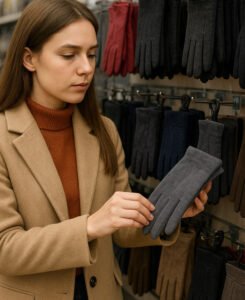How to Estimate Glove Size: A Comprehensive Guide
Table of Contents
Why Proper Glove Fit Matters
Finding the right glove size is crucial for comfort, safety, and performance. Whether you’re selecting work gloves for industrial applications, medical gloves for healthcare procedures, or winter gloves for outdoor activities, proper sizing ensures optimal functionality and protection.
Ill-fitting gloves can lead to reduced dexterity, hand fatigue, blisters, and compromised safety. Too-small gloves restrict movement and circulation, while oversized gloves can slip off or interfere with grip and precision tasks.
How to Measure Your Hand
Tools You’ll Need
Before beginning the measurement process, gather these simple tools:
- Flexible measuring tape (cloth or paper tape measure)
- Ruler or straight edge
- Pen or marker
- Paper for recording measurements
Step-by-Step Measurement Process
Measuring Hand Circumference (Width)
- Wrap the measuring tape around your dominant hand at its widest point, typically across the knuckles excluding the thumb
- Keep your hand flat and fingers close together
- The tape should be snug but not tight
- Record the measurement in inches or centimeters
- Repeat for your non-dominant hand, as sizes may vary slightly
Measuring Hand Length
Hand length measurement is important for gloves that extend beyond the wrist:
- Place your hand flat on a piece of paper
- Mark the tip of your middle finger and the base of your wrist
- Measure the distance between these two points
- Record this measurement for reference
Universal Glove Sizing Chart
Most glove manufacturers follow standard sizing conventions. Use this chart as a general guide, keeping in mind that some brands may vary slightly:
| Size | Hand Circumference (inches) | Hand Circumference (cm) | Typical Hand Length (inches) |
|---|---|---|---|
| XS | 6.5 – 7″ | 16.5 – 17.8 cm | 6.5 – 7″ |
| S | 7 – 8″ | 17.8 – 20.3 cm | 7 – 7.5″ |
| M | 8 – 9″ | 20.3 – 22.9 cm | 7.5 – 8″ |
| L | 9 – 10″ | 22.9 – 25.4 cm | 8 – 8.5″ |
| XL | 10 – 11″ | 25.4 – 27.9 cm | 8.5 – 9″ |
| XXL | 11 – 12″ | 27.9 – 30.5 cm | 9 – 9.5″ |
Sizing for Different Glove Types
Work and Safety Gloves
Industrial and safety gloves often require more precise fitting due to safety requirements. Many professional-grade manufacturers, including specialized equipment producers like Jubaomachine, design their glove sizing systems to accommodate various hand shapes and work environments. These gloves should fit snugly without restricting blood circulation or finger movement.

Medical and Disposable Gloves
Medical gloves, including nitrile, latex, and vinyl varieties, require precise sizing for optimal tactile sensitivity and barrier protection. These gloves should fit like a “second skin” without being uncomfortably tight.
Winter and Insulated Gloves
Winter gloves often require sizing up slightly to accommodate the insulation layer while still maintaining adequate dexterity. Consider the intended use – skiing gloves may fit differently than everyday winter gloves.
Tips for Achieving the Perfect Fit
Beyond basic measurements, consider these factors for optimal glove selection:
- Try before buying: Whenever possible, physically test gloves before purchasing
- Consider the material: Some materials stretch over time, while others maintain their shape
- Account for intended use: Tasks requiring fine motor skills need tighter-fitting gloves
- Check finger length: Ensure fingertips aren’t compressed or swimming in excess material
- Test grip functionality: Make a fist and manipulate objects to verify adequate dexterity
Common Sizing Mistakes to Avoid
Avoid these frequent errors when selecting glove sizes:
- Assuming one size fits all hands: Hand shapes vary significantly between individuals
- Ignoring dominant hand differences: Your dominant hand is often slightly larger
- Not considering glove thickness: Thicker gloves may require sizing up
- Overlooking brand variations: Different manufacturers may have slight sizing differences
- Forgetting about seasonal changes: Hands can swell in heat or contract in cold weather
Conclusion
Proper glove sizing is essential for comfort, safety, and performance across all applications. By taking accurate hand measurements and understanding how different glove types should fit, you can ensure optimal protection and functionality. Remember that the perfect fit balances snugness with comfort, allowing full range of motion without excessive looseness.
When in doubt, consult manufacturer-specific sizing charts and don’t hesitate to seek professional advice, especially for specialized applications like medical procedures or industrial work where proper fit is critical for safety and effectiveness.
Take the time to measure correctly and choose wisely – your hands will thank you for the extra effort in finding the perfect glove fit.
